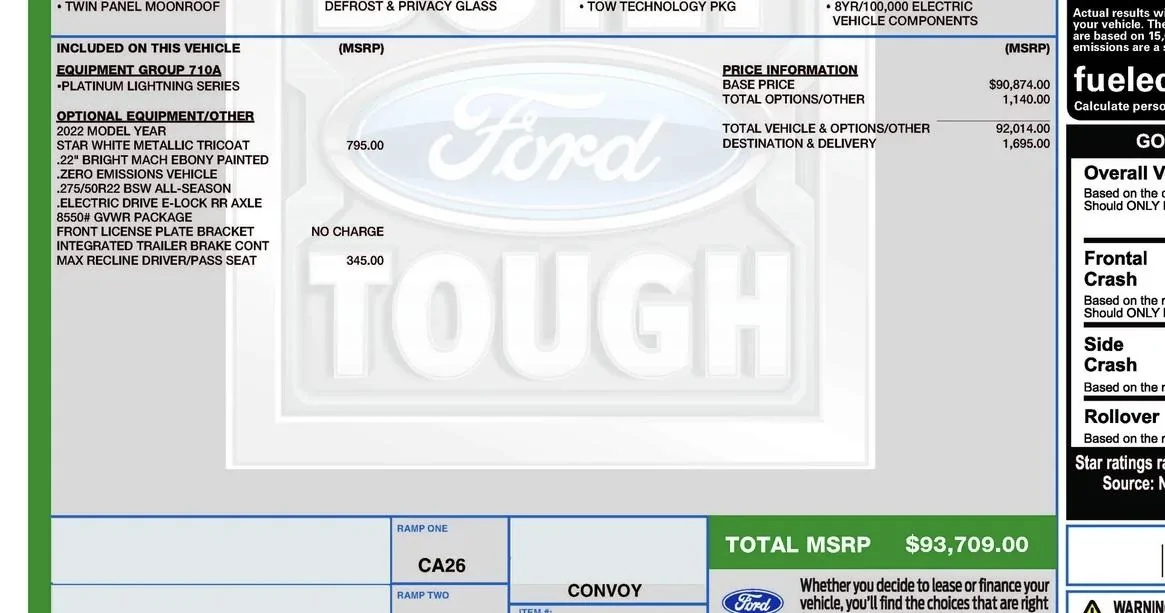cvalue13
Well-known member
- Joined
- Jul 24, 2022
- Threads
- 23
- Messages
- 789
- Reaction score
- 764
- Location
- Austin, Texas
- Vehicles
- ‘22 Lightning ER Lariat
- Occupation
- Fun-Employed
fair enough!I'm biting my tongue as hard as I can, I learned long ago during my active duty career not to express opinions until policy & counsel have reviewed and issued guidance.
I’m a bit more foolhardy, and in any event attempt (but surely fail) to inject to cast doubt or caution over those confused or asserting certainty.
To wit, your point about awaiting guidance from the IRS brings up an important nuance folks interested in this topic should bare in mind:
Technically speaking, the rules around the MSRP and income caps go into effect when the IRS issues it’s guidance which in theory could be before 12/31/22; that said, indications are that few expect the IRS to issue such guidance before the 12/31/22 deadline, but still it should be held in mind that while it’s possible that the relevant date for the MSRP cap is 12/31/22 it is not certain it couldn’t happen earlier.
Secondly, as for the trigger of “placed in service” - for what little it’s worth to others, a quick glance around at the “placed-in-service” approaches taken by the IRS suggest it definitely “depends,” and somewhere out there there will be specific guidelines around a personal use vehicle eligible for individual tax credits (which specific guidelines I’m unfamiliar with), but that it would appear folks should not assume that completion of purchase is the relevant trigger. In fact, seems doubtful, to my untrained eye.
to reemphasize and clarify that last point, while the “transition rule” placed a lot of emphasis on the date of having a binding sales contract (which is probably leading folks to a present confusion), folks should not assume (and in fact it seems doubtful) that such a purchase date trigger is relevant to when their vehicles will be viewed as “placed in service” by the IRS.
you *might* even need keys in hand?
That said, while the story isn’t over until the fat lady sings (ie the IRS issues it’s specific new guidance on these specific new laws), if you have a tax professional they may be familiar with what the IRS has historically said about the “placed in service” trigger for personal vehicles eligible for personal tax credits.
Until a tax professional says otherwise, and in particular until the IRS says otherwise in guidance not yet released, I personally would presently assume that to feel remotely comfortable I could avoid the MSRP cap (with minimal audit risk):
(1) I could pull the vehicle in my driveway (after completing purchase)
(2) on a calendar date prior to the calendar date the IRS issues its guidance on the new law (which I’d hope is 12/31/22 but can’t bank on)
But to repeat, I’m here only expressing my personal view of how to estimate the relevant facts from a non-tax professional’s view, until learning otherwise from a tax professional. References above to possibly needing registration/titling are an example of unknowns I’d seem a tax professional to weigh in on.
Notably, I’m pointing out my above personal ‘estimate’ because it’s meanwhile rather unhelpful to state the technical present conclusion: you won’t know for sure what ‘placed in service’ means until the IRS issues it’s guidance, but the vehicle will need to be ‘placed in service’ before the IRS issues it’s guidance
Sponsored


